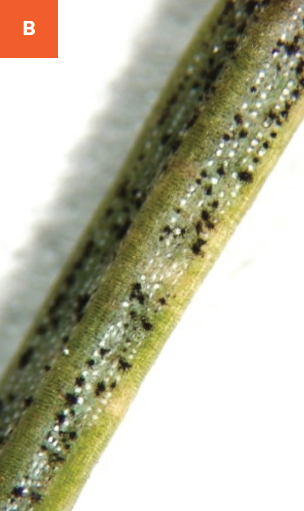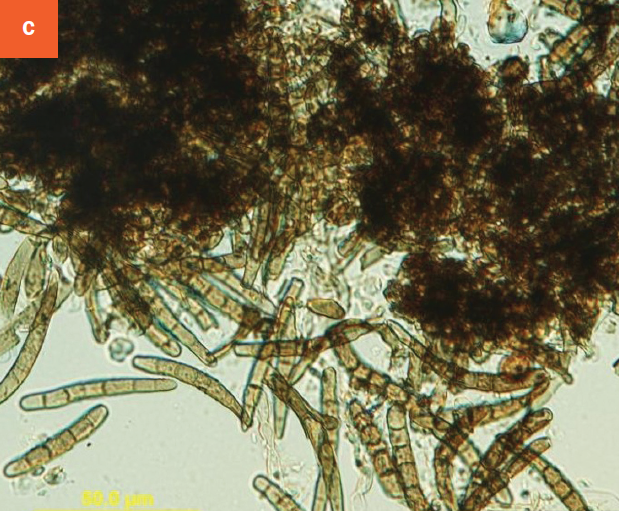Stigmina Needle Cast
Stigmina lautii (fungus)
HOST Colorado blue spruce, black spruce, white spruce, Norway spruce
DAMAGE/SYMPTOMS Symptoms are very similar to Rhizosphaera needle cast. In spring or early summer, older needles on mainly the lower branches turn yellow to brown. Small, black fuzzy-looking fruiting bodies emerge in rows out of stomata of previous season’s needles. Discolored needles fall off in late summer or fall one to two years after infection. This disease results in severe thinning of the needles on the lower branches.
DISEASE CYCLE The fungus overwinters in infected needles on the tree and on the ground. In spring, during mild and wet weather, spores are released from the black fruiting bodies and distributed by wind and splashing water to newly emerging needles. Infected needles are dropped approximately one to two years after initial infection.
MANAGEMENT Plant trees that are well adapted to your area. Rake up infected needles and prune out and dispose of affected branches to reduce the disease source. Disinfect pruning tools between cuts with 70% ethyl alcohol or a standard household disinfectant spray. Provide good spacing between trees and avoid hitting the tree canopy during irrigation. Affected trees can be treated with fungicide containing the active ingredient copper or chlorothalonil to protect newly emerging needles. Apply fungicides in spring when new needles have grown half their mature length. A second treatment should be applied three to four weeks later when new needles are full grown. Strictly follow instructions on the pesticide labels.
A Spruce tree branches affected by stigmina needle cast disease. B Dark, round fruiting bodies with hair-like tendrils sporulate on needle. C Stigmina sp. spores.



